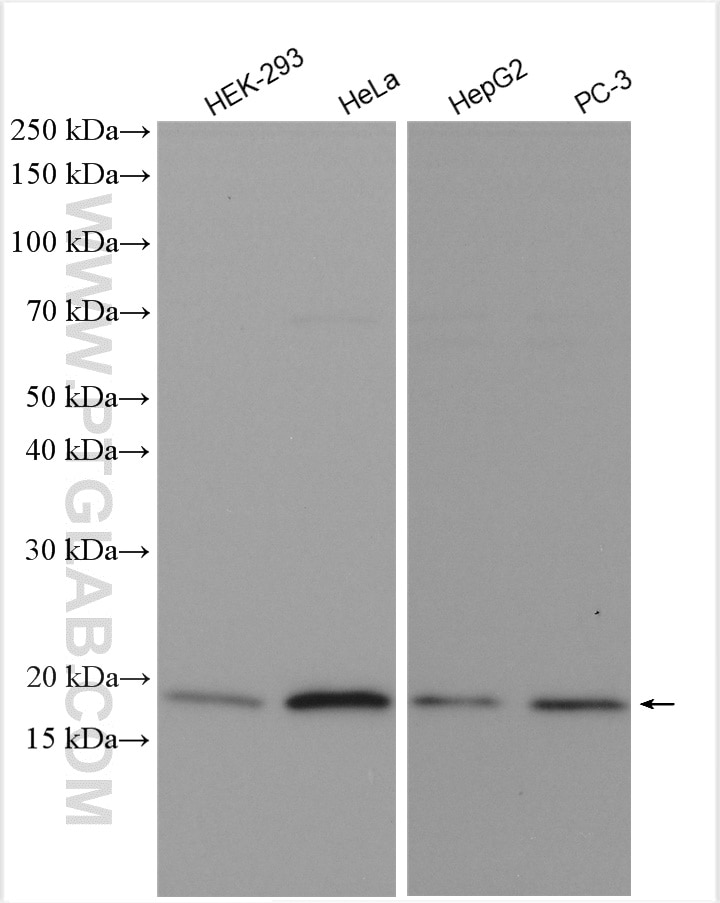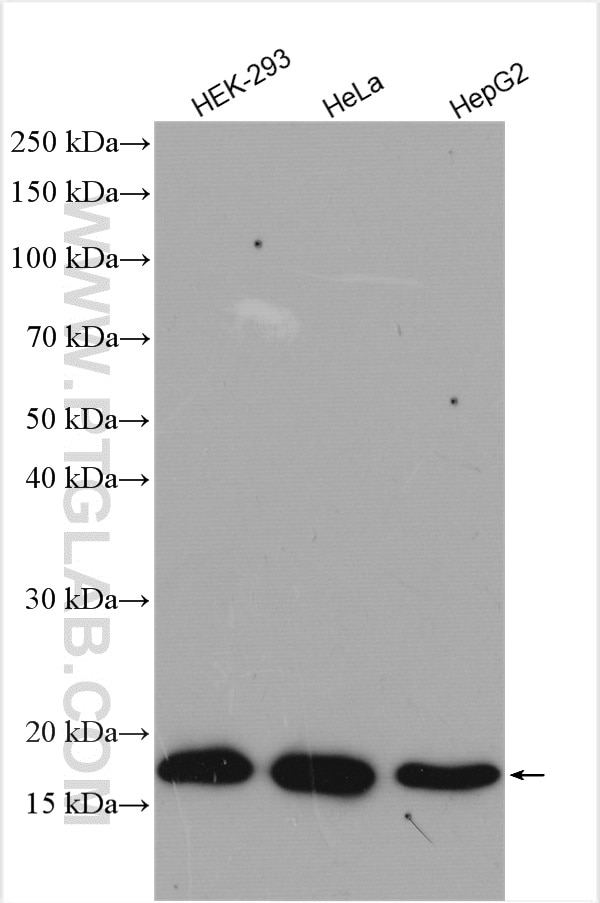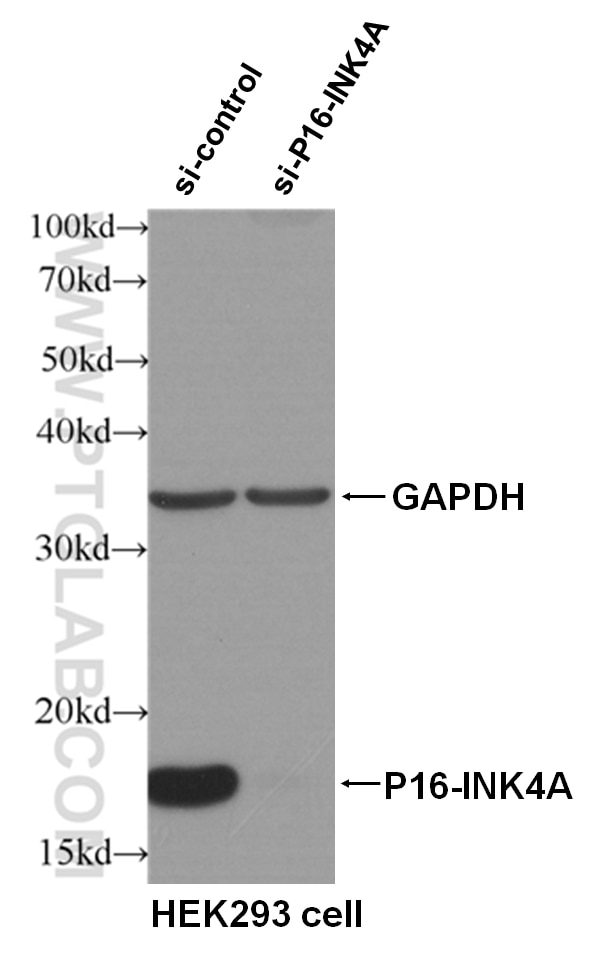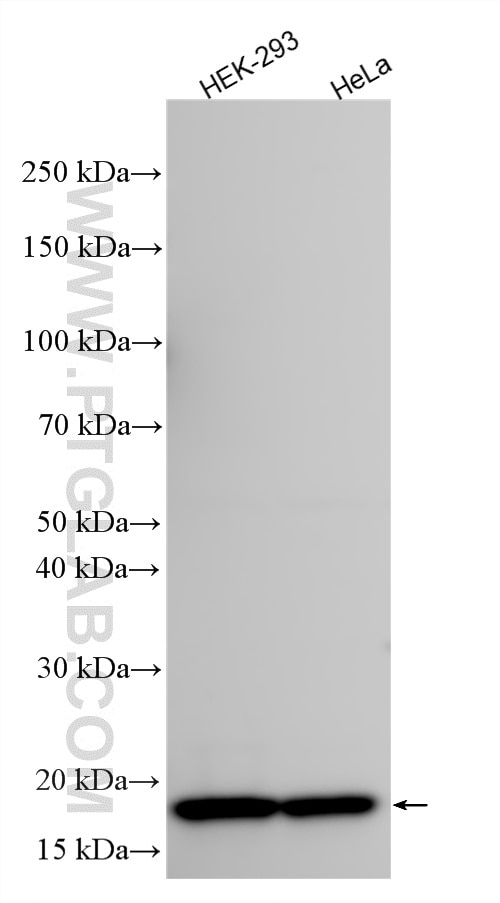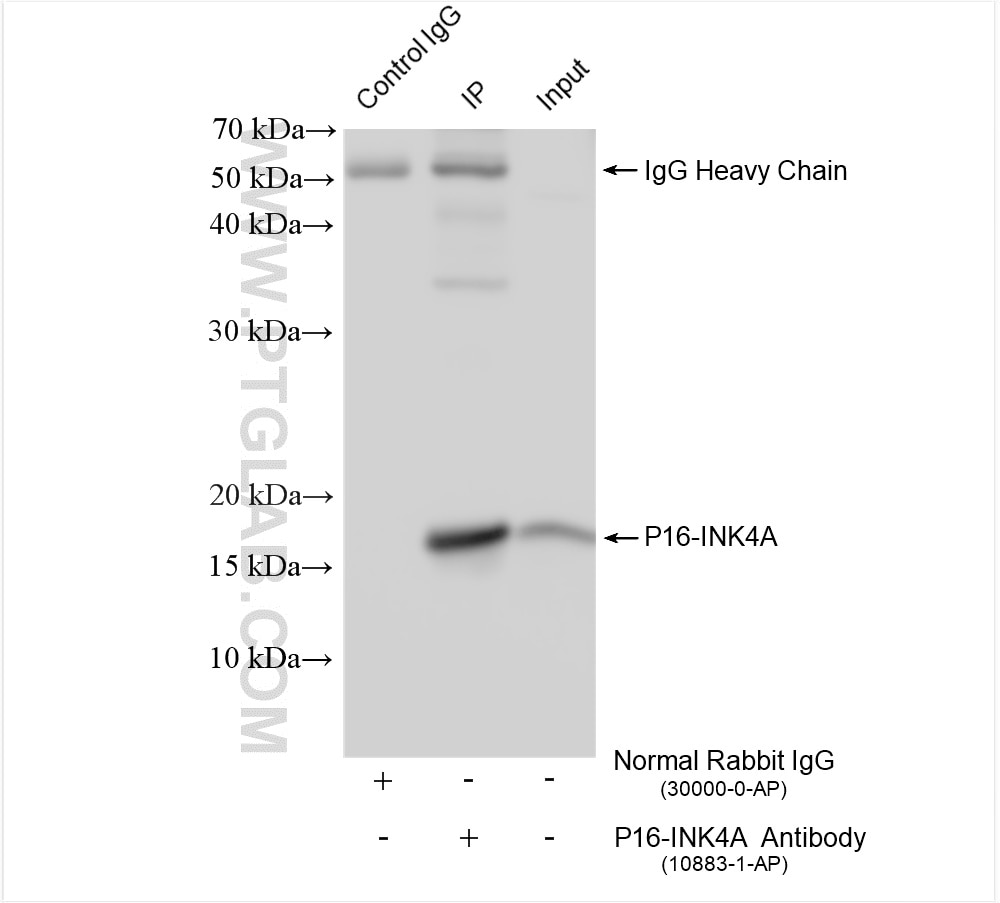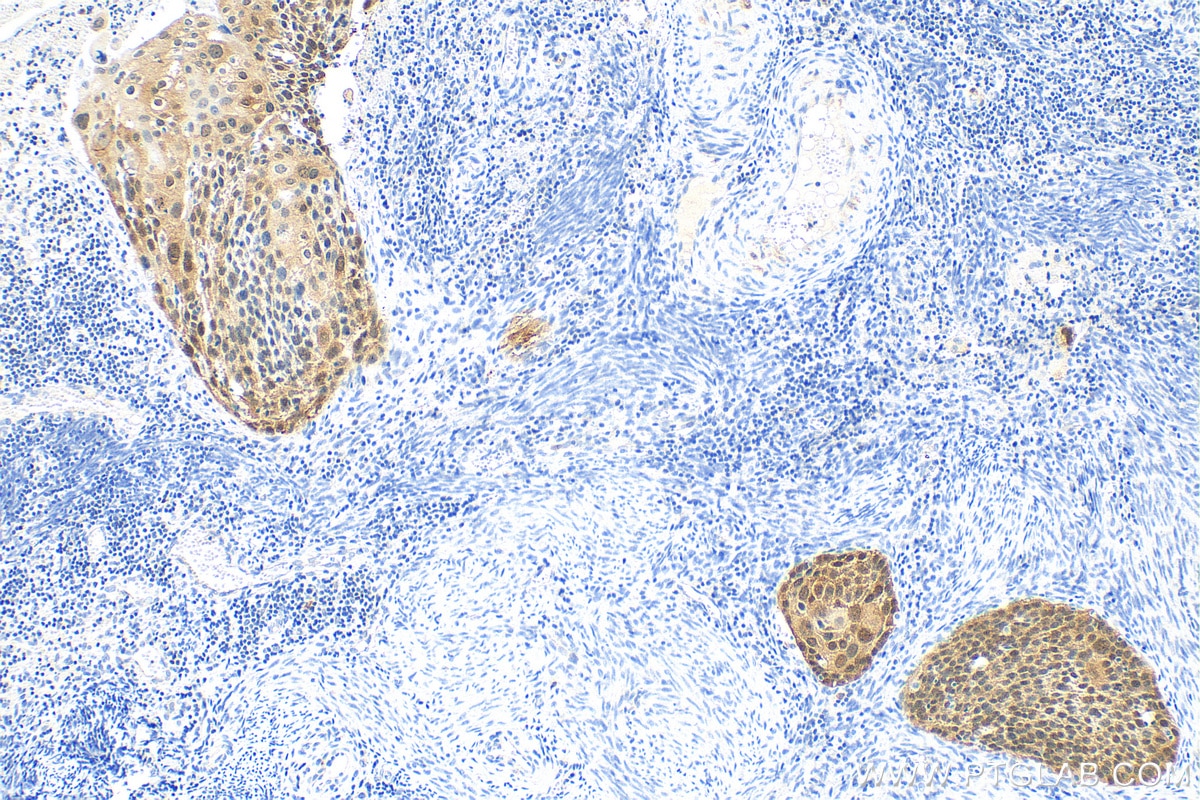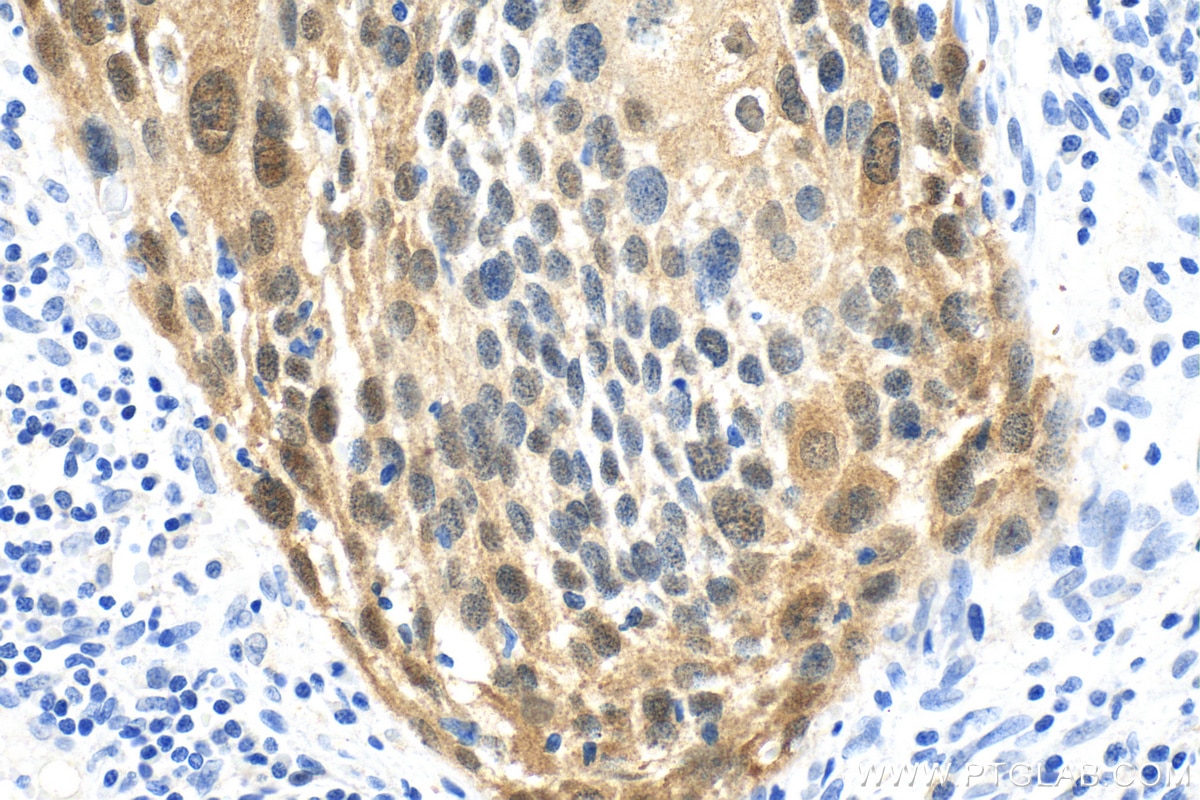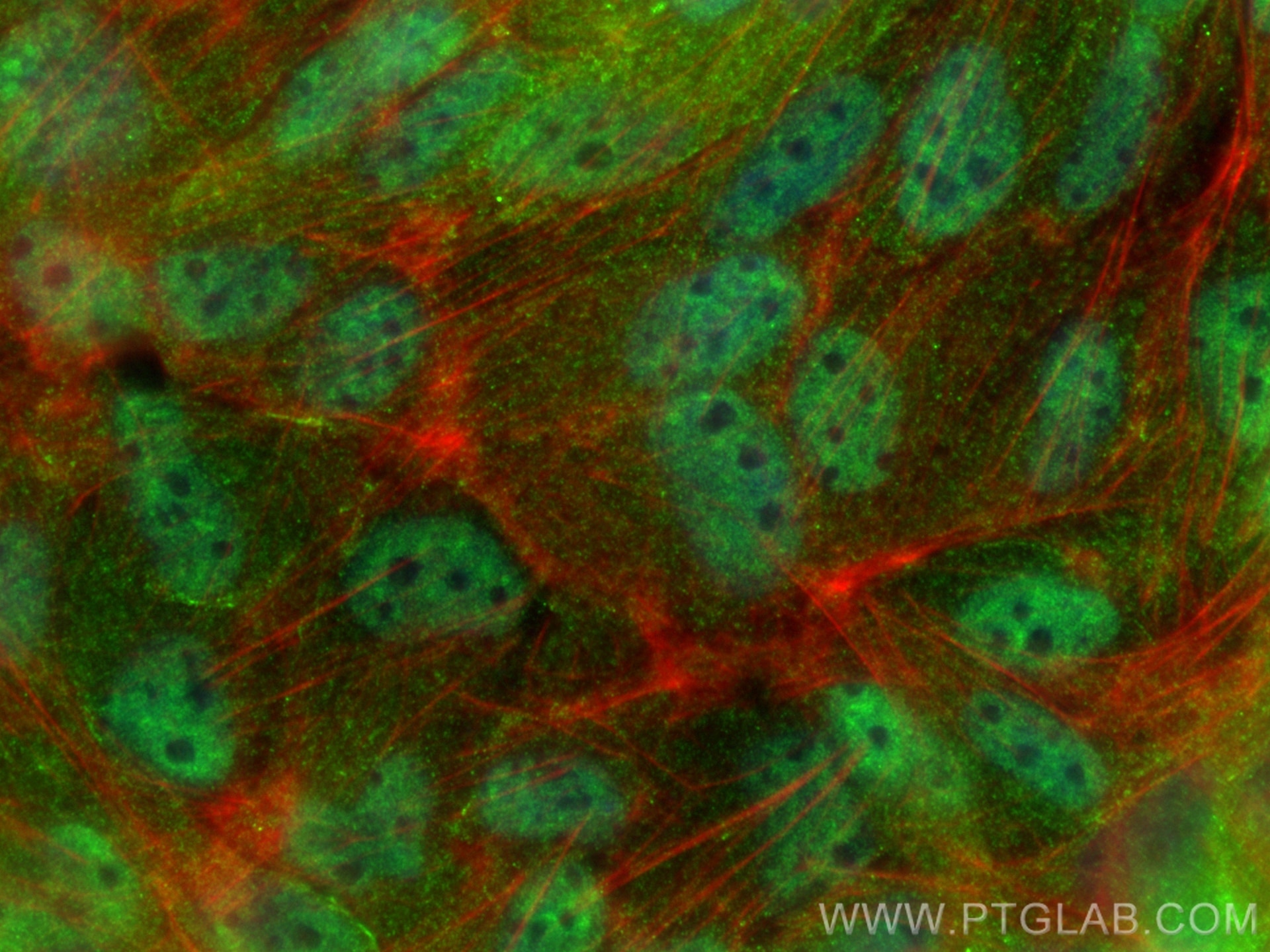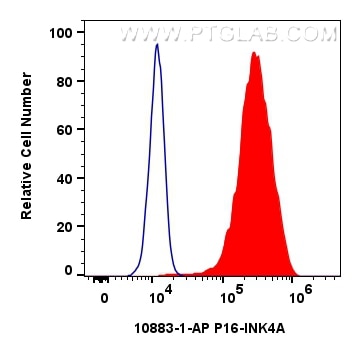- Featured Product
- KD/KO Validated
CDKN2A/P16-INK4A Polyklonaler Antikörper
CDKN2A/P16-INK4A Polyklonal Antikörper für WB, IHC, FC (Intra), IP, ELISA
Wirt / Isotyp
Kaninchen / IgG
Getestete Reaktivität
human, hund und mehr (5)
Anwendung
WB, IHC, FC (Intra), IP, CoIP, ELISA
Konjugation
Unkonjugiert
Kat-Nr. : 10883-1-AP
Synonyme
Geprüfte Anwendungen
| Erfolgreiche Detektion in WB | HEK-293-Zellen, HeLa-Zellen, HepG2-Zellen, PC-3-Zellen |
| Erfolgreiche IP | HEK-293-Zellen |
| Erfolgreiche Detektion in IHC | humanes Zervixkarzinomgewebe Hinweis: Antigendemaskierung mit TE-Puffer pH 9,0 empfohlen. (*) Wahlweise kann die Antigendemaskierung auch mit Citratpuffer pH 6,0 erfolgen. |
| Erfolgreiche Detektion in IF/ICC | MDCK-Zellen |
| Erfolgreiche Detektion in FC (Intra) | HeLa-Zellen |
Empfohlene Verdünnung
| Anwendung | Verdünnung |
|---|---|
| Western Blot (WB) | WB : 1:1000-1:6000 |
| Immunpräzipitation (IP) | IP : 0.5-4.0 ug for 1.0-3.0 mg of total protein lysate |
| Immunhistochemie (IHC) | IHC : 1:1000-1:4000 |
| Immunfluoreszenz (IF)/ICC | IF/ICC : 1:200-1:800 |
| Durchflusszytometrie (FC) (INTRA) | FC (INTRA) : 0.40 ug per 10^6 cells in a 100 µl suspension |
| It is recommended that this reagent should be titrated in each testing system to obtain optimal results. | |
| Sample-dependent, check data in validation data gallery | |
Veröffentlichte Anwendungen
| KD/KO | See 1 publications below |
| WB | See 379 publications below |
| IHC | See 59 publications below |
| IP | See 1 publications below |
| CoIP | See 1 publications below |
Produktinformation
10883-1-AP bindet in WB, IHC, FC (Intra), IP, CoIP, ELISA CDKN2A/P16-INK4A und zeigt Reaktivität mit human, hund
| Getestete Reaktivität | human, hund |
| In Publikationen genannte Reaktivität | human, Affe, Hausschwein, Hund, Kaninchen, Rind |
| Wirt / Isotyp | Kaninchen / IgG |
| Klonalität | Polyklonal |
| Typ | Antikörper |
| Immunogen | CDKN2A/P16-INK4A fusion protein Ag1328 |
| Vollständiger Name | cyclin-dependent kinase inhibitor 2A |
| Berechnetes Molekulargewicht | 16 kDa |
| Beobachtetes Molekulargewicht | 16-18 kDa |
| GenBank-Zugangsnummer | BC021998 |
| Gene symbol | CDKN2A |
| Gene ID (NCBI) | 1029 |
| Konjugation | Unkonjugiert |
| Form | Liquid |
| Reinigungsmethode | Antigen-Affinitätsreinigung |
| Lagerungspuffer | PBS with 0.02% sodium azide and 50% glycerol |
| Lagerungsbedingungen | Bei -20°C lagern. Nach dem Versand ein Jahr lang stabil Aliquotieren ist bei -20oC Lagerung nicht notwendig. 20ul Größen enthalten 0,1% BSA. |
Hintergrundinformationen
Background
p16 is an important cell cycle regulator and acts as a tumor suppressor. It may also be referred to as one of a number of synonyms, including p16INK4a and cyclin-dependent kinase inhibitor 2A.
What is the molecular weight of P16?
16kDa. P16 is encoded by the CDKN2A gene in humans and is a chain comprising 148 amino acids.
What is the function of p16?
P16 inhibits cells from progressing from G1 into S phase, binding to cyclin-dependent kinase 4 (CDK4) and inhibiting its kinase ability, so that it cannot phosphorylate the retinoblastoma tumor suppressor (RB). Without this phosphorylation, RB does not activate downstream genes, so the G1/S checkpoint cannot be passed and the cell does not proliferate (PMID: 8259215).
What is the role of p16 in senescence?
In senescence, cells are irreversibly arrested in the cell cycle. P16 is expressed more highly in aging tissue, is associated with intrinsic cellular aging signals such as telomere shortening, and can therefore be used as a marker of senescence (PMID: 9244355; PMID: 19535234). Due to its role in cell cycle arrest, p16 drives the initiation and maintenance of a cellular senescent phenotype.
What is the role of p16 in cancer?
As a negative regulator of proliferation, p16 is a known tumor suppressor. Mutations in the CDKN2A gene that lead to inactivation of p16 protein have been associated with an increased risk of cancer and are often observed in primary tumors and in cancer cell lines (PMID: 9508208). The inactivation of p16 has been shown to be a key early stage of tumor progression. In a small number of tumor types that are caused by the human papilloma virus (HPV), p16 is in fact overexpressed when RB is inactivated, releasing p16 and causing an accumulation (PMID: 21297668).
Protokolle
| PRODUKTSPEZIFISCHE PROTOKOLLE | |
|---|---|
| WB protocol for CDKN2A/P16-INK4A antibody 10883-1-AP | Protokoll herunterladen |
| IHC protocol for CDKN2A/P16-INK4A antibody 10883-1-AP | Protokoll herunterladenl |
| IF protocol for CDKN2A/P16-INK4A antibody 10883-1-AP | Protokoll herunterladen |
| IP protocol for CDKN2A/P16-INK4A antibody 10883-1-AP | Protokoll herunterladen |
| STANDARD-PROTOKOLLE | |
|---|---|
| Klicken Sie hier, um unsere Standardprotokolle anzuzeigen |
Publikationen
| Species | Application | Title |
|---|---|---|
Science PI(3,4)P2-mediated cytokinetic abscission prevents early senescence and cataract formation. | ||
Signal Transduct Target Ther Glibenclamide targets MDH2 to relieve aging phenotypes through metabolism-regulated epigenetic modification | ||
Nat Genet Early TP53 alterations engage environmental exposures to promote gastric premalignancy in an integrative mouse model. | ||
Cancer Cell mTORC1 Activation Blocks Braf(V600E)-Induced Growth Arrest but Is Insufficient for Melanoma Formation. | ||
Circulation Vascular Smooth Muscle Cell Senescence Promotes Atherosclerosis and Features of Plaque Vulnerability. |
Rezensionen
The reviews below have been submitted by verified Proteintech customers who received an incentive for providing their feedback.
FH Mathew (Verified Customer) (08-19-2025) | Worked well for western blots of 2DD primary foreskin fibroblast that had undergone confluence induced senescence.
|
FH Vikas (Verified Customer) (04-23-2024) | Highly recommended, to use 1:1000 dilution for Western bloating.
|
FH Vikas (Verified Customer) (04-23-2024) | Used p16 antibody for western-bolting at the dilution 1:10000, antibody worked at best. Thank you, highly recommended it.
|
FH Susanne (Verified Customer) (10-11-2022) | blocking: ROTIblock Incubation over night 4°C
|
FH Malak (Verified Customer) (04-22-2021) | Unfortunately, with this antibody, I didn't get a bad at 16 KD, however it was higher (around 20 KD). The suppliers were so professional and offered their help to optimize this antibody.
|
FH Joshua (Verified Customer) (03-12-2020) | MDCKs fixed in 4% paraformaldehyde and stained overnight at 4 C. Excellent, bright stain.
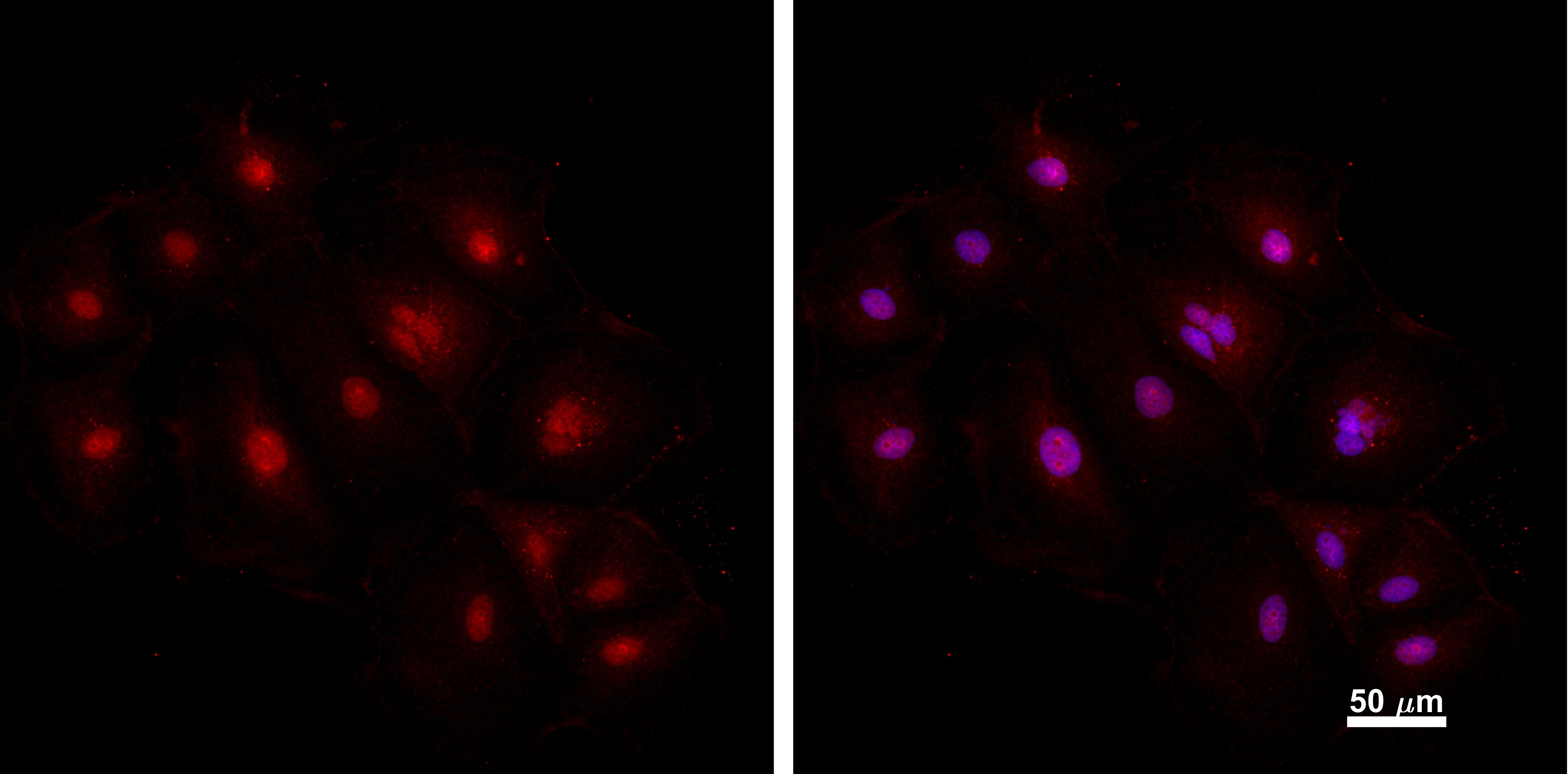 |
FH Kyle (Verified Customer) (02-28-2019) | Clean bands, low background
|
